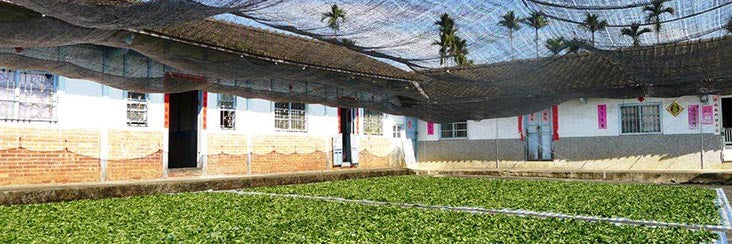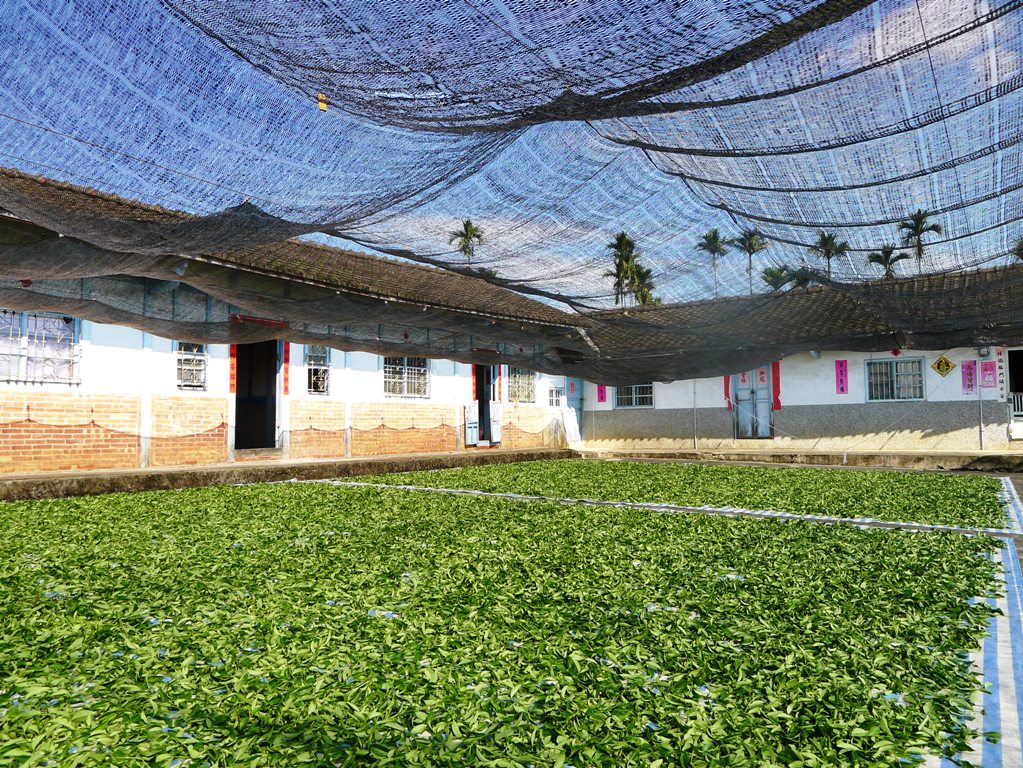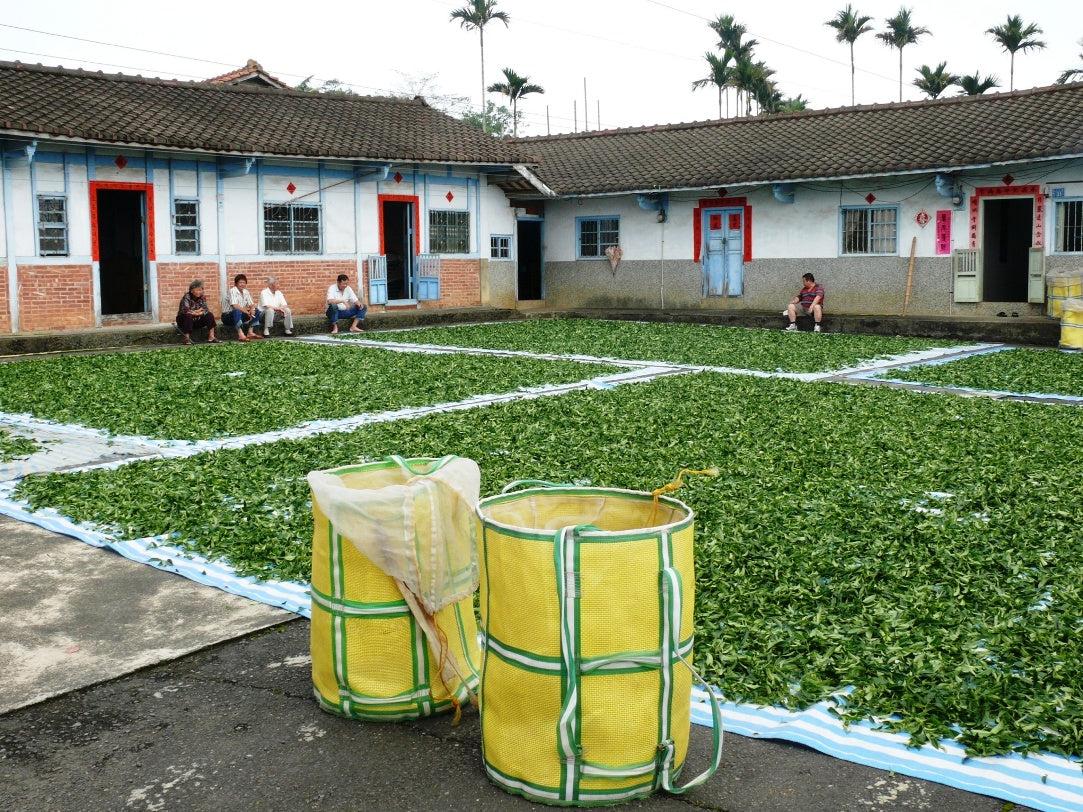
A Brief Background of Recent Trends in the Taiwan Tea Industry
The most significant transition in the Taiwan tea industry in its recent generation has been two-fold.
One aspect of change in the industry is that Taiwanese tea farmers have ventured abroad to establish or acquire tea gardens in mainland China and Southeast Asia with the prospect of gaining an economic edge on the increasing domestic and international demand for quality Taiwan Oolong Tea. The tea that is produced outside of Taiwan has yet to compare with that which is produced domestically. It is lower quality due to a combination of environmental, tea cultivar adaptation, and quality control reasons.
The other side of this trend has been the expansion of domestic tea farms by private owners as well as corporate development of the industry. What was once a family-run industry passed on from generation to generation has evolved into much larger scale agriculture involving third party management and laborers. And on this side too, the result has been a compromise of quality and integrity in the production of artisan teas.
In our perception, only a portion of the remaining proprietors of family run farms are fully cognizant of this evolution in the industry and the repercussions entailed. Or perhaps they are simply the ones who are inspired and resourceful enough to develop a method of preserving their valuable heritage.
In northern Taiwan, small family-run tea gardens are being abandoned as the current generation of heirs opts for alternative livelihoods in the 21st century. Hired labor for harvesting the leaves is not economical and the real estate value of the farm makes farming the land unnecessary.
In central Taiwan, many farmers who were successful in developing tea farms last generation have bought high elevation real estate and established vast plots of tea gardens. In conjunction, they have constructed large climate-controlled processing facilities with modern mechanized methods to produce a standardized product with optimum consistency and minimum labor at high volumes. The level of volume which warrants these mechanized processing methods and minimizes the hands-on interaction with the tea leaves as they are cured results in the loss of the traditional art of tea making, and the artisan quality is significantly compromised. Our mission in the sourcing of our product has developed out of the realization of these trends.
We expressly seek out those producers of tea whose farms, methodologies, principles and quantities of yield remain within the capacity and capability of artisan tea making.
The parameters addressed in our mission bring attention to more specific standards of tea production that have evolved out of an earlier trend in the Taiwan tea industry - the initial phase of chemical agricultural products and large scale tea farms. The rapid development of the industry in the 1980’s coupled with unprecedented use of chemical products had detrimental environmental effects. The most direct effects were on soil composition which in turn affected the quality of the tea produced. In fact, it was the effects of this irresponsible promotion and use of chemical products that helped spur the development of new high elevation real estate for tea farming.
The original tea farms that made Taiwan tea famous were in turn spoiled by these unsustainable methods - primarily the use of chemical weed killers, but also fertilizers and pesticides. These farmers learned the hard way by reaping the effects of these new, untried modern methods. Now, some 30 years later - they are much wiser for the wear. Many farmers had no choice but to let entire plots of land lie fallow for many years to allow for the de-acidification of the soil, and have applied rehabilitation methods of deeply turning the soil and administering natural neutralizers and fertilizers. For the most part, this era has passed and the land is back in use - passing laboratory tests of soil composition, and farms have been replanted with a new generation of tea trees over a decade ago.
As with most evolutionary trends, improvements have been made and knowledge gained from experience. The inheritors of the previous generation’s difficult lessons learned are much more resourceful and careful in the management of their farms. It is this category of tea producers that we are most impressed and inspired by. They have recovered their family heritage and embody a new breed of responsible and innovative tea artisans. They are well educated and independent in their approach to the new age of tea industry - and a central factor of this approach is keeping their heritage alive and thriving. They have adopted more eco-friendly practices in response to experiencing the effects of following externally promoted methods by chemical manufacturers. They are working resourcefully with their own reality at hand. And to us, this makes a big difference. We see a micro-economy here that is adopting sustainable practices in order to keep tradition alive in the midst of commercialization and standardization of a “specialty” product.
Some of our sources have pooled their resources within their close-knit community of farmers in recent years in order to have enough volume to compete with the more standardized and commercialized sources of tea while maintaining their own superior level of quality control. In short, they are finding ways to keep their expertise in artisan tea making intact and in demand by tea lovers who want something more than just "specialty" tea with a famous place name attached.
We believe that these people and their produce are worth representing in a manner that attaches substantial criteria to the terms “premium, specialty, rare, artisan, exclusive, etc. - in effect, imbibing them with real, living meaning.




